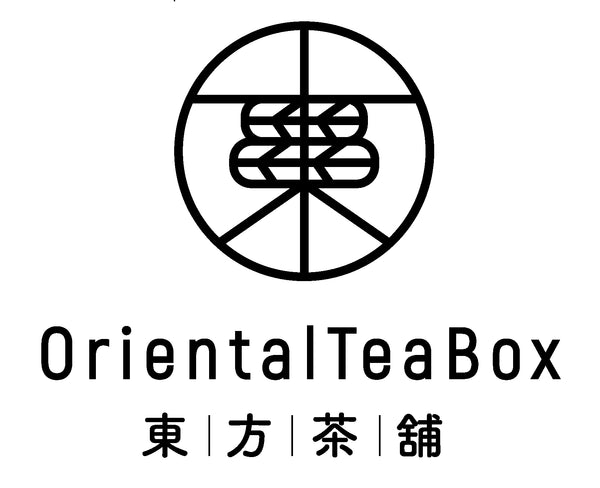Introduction: A Cross-Cultural Legacy in Ceramics
Japanese studio ceramics are deeply rooted in tradition, nature, and philosophy. From the rustic textures of Shigaraki ware to the refined elegance of Hagi pottery, Japanese ceramics have long enhanced the experience of tea drinking. However, their influence extends far beyond Japan, shaping contemporary global tea culture.
British potter Bernard Leach (1887–1979) played a pivotal role in introducing Japanese ceramic techniques and aesthetics to the West. After training in Japan, he returned to England and founded the Leach Pottery, where he merged Japanese craftsmanship with Western artistic traditions. Today, this "East meets West" fusion is evident in modern tea culture, where Japanese studio ceramics are embraced by tea enthusiasts worldwide.
This article explores how Japanese ceramics have shaped global tea traditions, influenced Western artisans, and continue to inspire contemporary tea ware.
Bernard Leach: The Bridge Between East and West
Bernard Leach is often called the "father of British studio pottery." While living in Japan, he trained in raku pottery and was deeply influenced by Shoji Hamada, a key figure in the Mingei (folk craft) movement.
Leach admired the simplicity, natural materials, and functionality of Japanese ceramics—qualities that aligned with the Arts and Crafts Movement in the West. When he returned to England, he introduced Japanese firing methods, glazing techniques, and wabi-sabi aesthetics to Western ceramics.
His influential book, A Potter’s Book (1940), became a foundational text for potters worldwide, reinforcing the Japanese philosophy of handmade, utilitarian ceramics.
Key Japanese Influences on Bernard Leach’s Work:
- Wabi-sabi aesthetics: Embracing imperfection and natural beauty.
- Reduction firing techniques: Used in Shino and Oribe glazes.
- Handmade over industrial production: Promoting functional, artisan-crafted ceramics.
Leach’s legacy continues to influence modern potters, many of whom incorporate Japanese ceramic techniques into their work today.

Why Western Tea Lovers Are Drawn to Japanese Ceramics
While British afternoon tea traditionally relied on fine porcelain, contemporary tea enthusiasts increasingly favor Japanese tea ware for its organic textures, warmth, and handmade charm.
- What Makes Japanese Tea Ware Appealing in the West?
Tactile and Visual Experience: Unlike smooth porcelain, Japanese ceramics have natural, earthy textures that enhance tea drinking. - Matcha and Specialty Tea Trends: The rise of matcha culture has increased demand for matcha bowls (chawan) and kyusu teapots in the West.
- Uniqueness and Craftsmanship: Each handmade piece is one-of-a-kind, appealing to collectors and mindful tea drinkers.
This shift reflects a broader movement toward mindfulness in tea drinking, where the ceramic vessel becomes an integral part of the experience.

From Japan to the West: How Japanese Techniques Shaped Global Ceramics
Japanese ceramic techniques have profoundly influenced Western potters, many of whom studied in Japan before developing their own interpretations.
Japanese Firing and Glazing Techniques in Western Pottery

- Shino Glaze: Developed in 16th-century Japan, this glaze is now widely used by Western potters for its soft orange and white tones.
- Oribe Glaze: A distinctive green glaze originating from 16th-century Japan, commonly seen in both Japanese and Western ceramics today.
The Rise of Wood-Fired Kilns in the West

Western potters have adopted the anagama (wood-fired kiln) method, inspired by traditional Japanese techniques. This firing process produces unpredictable textures that make each piece unique.
The Growing Influence of Wabi-Sabi in Western Pottery

Rather than pursuing machine-made perfection, contemporary Western potters embrace imperfection, asymmetry, and natural textures, mirroring the Japanese wabi-sabi philosophy.
Modern Tea Ware: A Fusion of East and West
The boundary between Japanese and Western ceramics is becoming increasingly fluid. While Western potters incorporate Japanese techniques, Japanese ceramicists experiment with modern forms and colors to appeal to a global audience.
Examples of East-West Ceramic Fusion in Tea Ware:
- Western potters using Japanese raku techniques to create crackled-glaze tea bowls.
- Hybrid tea sets blending Japanese textures with Western-style handles and spouts.
- Modern tea houses pairing Japanese cups with diverse tea traditions, from Chinese oolong to English black tea.
This cross-cultural exchange has led to a revival of handmade, small-batch tea ware, where functionality and aesthetics are equally valued.
How to Incorporate Japanese Ceramics into Your Tea Ritual
Whether you enjoy matcha, loose-leaf tea, or herbal infusions, adding Japanese ceramics to your tea routine can enhance both the aesthetic and sensory experience.
Recommended Japanese Tea Ware for Beginners:

- Yunomi (湯のみ) Tea Cups – Simple, handleless cups for everyday tea drinking.
- Chawan (茶碗) Matcha Bowl – Essential for making matcha, allowing for proper whisking.
By integrating these handcrafted elements into your tea ritual, you support artisans and celebrate centuries of craftsmanship.
Conclusion: A Lasting Influence on Global Tea Culture
The fusion of Japanese and Western ceramic traditions is a testament to the timeless appeal of handmade pottery. What began with Bernard Leach’s apprenticeship in Japan has grown into a global movement, where potters and tea lovers alike continue to draw inspiration from Japanese craftsmanship.
Japanese ceramics embody simplicity, functionality, and a deep respect for nature—values that resonate across cultures. As more people embrace mindful tea drinking, the appreciation for handcrafted, meaningful tea ware grows, bridging traditions and fostering a deeper connection to the art of tea.
Whether used in a traditional tea ceremony or as part of a modern tea ritual, Japanese ceramics serve as a reminder that beauty lies in the details, and that the perfect tea experience is as much about the vessel as it is about the tea itself.
---
References
1. Leach, B. (1940). A Potter’s Book. Faber & Faber.
2. Hamada, S., & Leach, B. (1975). The Unknown Craftsman: A Japanese Insight into Beauty. Kodansha International.
3. Cort, L. A. (1992). Seto and Mino Ceramics: Japanese Collections in the Freer Gallery of Art. Smithsonian Institution.
4. Moeran, B. (1997). Folk Art Potters of Japan: Beyond an Anthropology of Aesthetics. Curzon Press.

